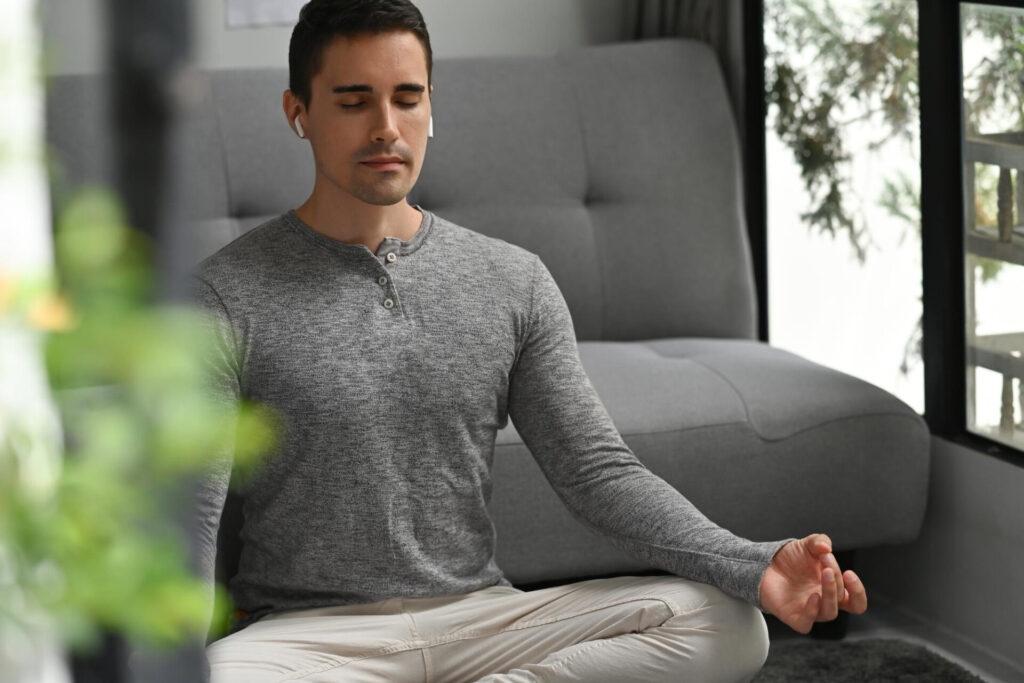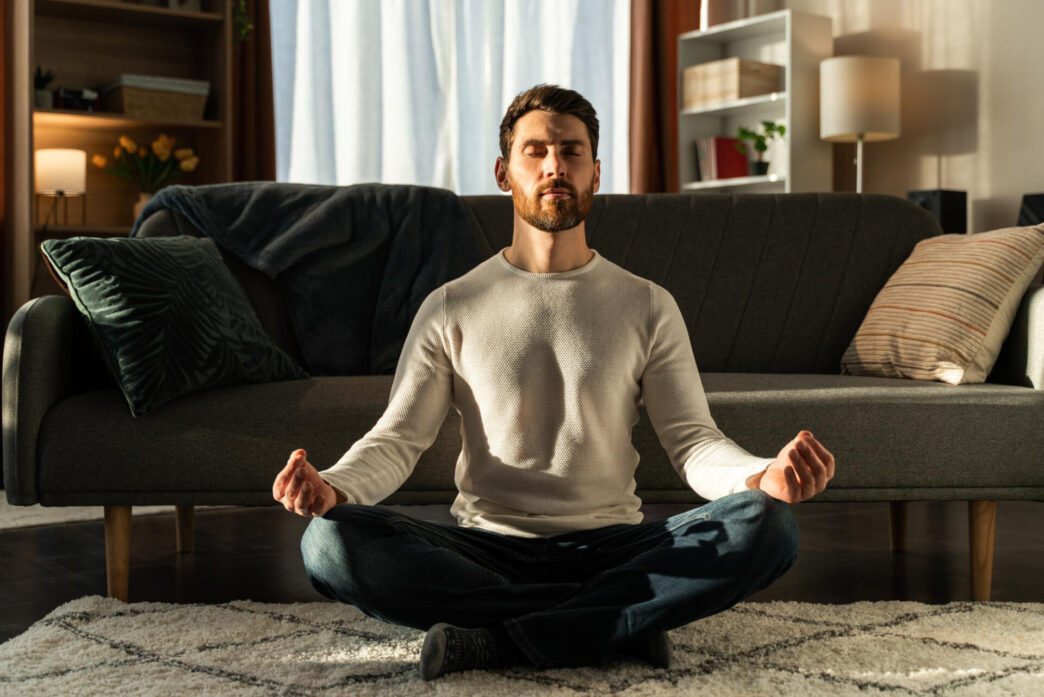Why “Anchoring in the Present Moment” Changes Everything
What if the calm you’re searching for isn’t somewhere far off—but right here, right now? In a world that constantly pulls your attention in every direction, the simple act of being present can feel revolutionary. Anchoring in the present moment is more than just a poetic phrase—it’s a practical, science-backed approach to reducing stress, improving focus, and living a more grounded, fulfilling life.
We rush, we multitask, we scroll. But amidst all that noise, we forget to do the one thing that truly restores balance: pause and be here. Whether you’re looking to ease anxiety, sharpen your awareness, or build emotional resilience, the power lies in this moment—not in the next one.
“You can’t control everything, but you can choose to show up fully in this moment—and that’s where your power begins.”
This isn’t about escaping your life. It’s about fully stepping into it.
🌿 What You’ll Discover in This Guide
This article is your roadmap to understanding how anchoring in the present moment can reshape your relationship with stress and anxiety. You’ll learn:
✔️ The brain science behind mindfulness and why it works
✔️ Daily techniques you can use in under a minute
✔️ Meditations that calm your nervous system and sharpen clarity
✔️ Tools to make mindfulness a lasting habit—even with a busy schedule
Whether you’re completely new to mindfulness or looking to deepen your practice, these strategies will help you build a calmer, more intentional life.
So take a deep breath. Let go of everything you’re holding. And arrive here—because this is where it all begins.

The Science of Mindfulness and Stress Relief
How Mindfulness Rewires the Brain
Stress triggers a fight-or-flight response in the brain, releasing cortisol and adrenaline, which can lead to anxiety, irritability, and even long-term health issues. However, neuroscience shows that mindfulness can reshape the brain, particularly the amygdala (the center of fear and stress) and the prefrontal cortex (responsible for rational thinking and emotional regulation).
Studies using fMRI scans have demonstrated that regular mindfulness practice reduces the size and activity of the amygdala while strengthening connections in the prefrontal cortex. This means that instead of immediately reacting to stress, you gain the ability to pause, assess, and choose a more balanced response.
Additionally, mindfulness boosts the production of gamma-aminobutyric acid (GABA), a neurotransmitter responsible for calming the nervous system. This chemical shift creates a lasting state of relaxation, making you more resilient to everyday stressors.
“Neuroscience confirms that mindfulness is more than just relaxation—it is a profound way to rewire your brain for greater resilience and clarity.”
The Role of Breath in Stress Reduction
Breathing is one of the most direct ways to influence your nervous system. Shallow, rapid breathing signals stress, keeping the body in a heightened state of alert. In contrast, slow, deep breaths activate the parasympathetic nervous system, promoting relaxation.
Mindful breathing exercises, such as the 4-7-8 technique (inhale for 4 seconds, hold for 7, exhale for 8), have been shown to lower blood pressure, reduce anxiety, and increase heart rate variability—a key marker of stress resilience.
A simple practice you can do right now:
✔️ Take a deep breath in through your nose for four seconds.
✔️ Hold the breath gently for a count of four.
✔️ Exhale slowly through your mouth for six seconds.
✔️ Repeat for 2–3 minutes and notice the shift in your body.
The Connection Between Mindfulness and Emotional Resilience
Mindfulness teaches you to observe thoughts and emotions without becoming overwhelmed by them. Instead of identifying with stress (“I am stressed”), mindfulness allows you to reframe it as a passing experience (“I am noticing stress”).
A 2018 study published in Psychosomatic Medicine found that individuals practicing mindfulness-based stress reduction (MBSR) reported lower cortisol levels and increased emotional resilience, even in high-pressure situations. This shift in perception reduces emotional reactivity, helping you navigate challenges with greater ease.
✔️ Key takeaway: The more you train your mind to stay present, the less control stress has over your life.

Practical Mindfulness Techniques for Daily Life
Stress doesn’t wait for a quiet meditation session to strike—it hits during a hectic workday, in the middle of traffic, or while juggling responsibilities. The good news? Mindfulness isn’t confined to formal meditation. You can integrate it into everyday moments with simple yet powerful techniques that keep you anchored in the present.
Grounding Exercises to Stay Present
Grounding techniques help interrupt stress by bringing your awareness back to your body and surroundings. These methods are particularly useful when you feel overwhelmed, anxious, or mentally scattered.
✔️ Feet-on-the-Ground Exercise: Sit or stand still and focus on the sensation of your feet touching the floor. Feel the pressure, the texture beneath you, and the steadiness of the ground. This subtle shift in awareness reconnects you with the present moment.
✔️ The Name-Three-Things Method: Pause and name three things you can see, hear, and physically feel. For example:
- “I see a coffee cup, a window, and my laptop.”
- “I hear birds outside, distant traffic, and my own breath.”
- “I feel my hands on my lap, the warmth of my sweater, and my heartbeat.”
This simple practice grounds you in your immediate environment, pulling you out of stress-induced autopilot mode.
✔️ Hand Awareness Practice: Bring your attention to your hands—notice their warmth, their position, any tension or relaxation. Move your fingers slightly, feeling every small motion. This technique helps calm the mind in just a few seconds.
The 5-4-3-2-1 Sensory Technique
This method is an excellent tool for quickly easing stress and anxiety by engaging the five senses. It works by shifting your focus away from worry and into direct sensory experience.
➡️ 5 things you can see (e.g., the sky, a book, your hands)
➡️ 4 things you can touch (e.g., your clothing, the chair, a soft blanket)
➡️ 3 things you can hear (e.g., birds chirping, your breath, background noise)
➡️ 2 things you can smell (e.g., coffee, fresh air)
➡️ 1 thing you can taste (e.g., a sip of water, a mint)
This technique is particularly effective for stopping anxious thoughts in their tracks and restoring a sense of calm.
Body Scan for Deep Relaxation
The body scan is a simple but effective mindfulness practice that helps release tension and improve awareness of physical sensations.
✔️ How to do it:
- Find a quiet space and sit or lie down comfortably.
- Close your eyes and take a few deep breaths.
- Start at the top of your head and mentally scan your body downward.
- Notice any tension or discomfort, but don’t judge—just observe.
- If you detect tightness, consciously relax that area before moving on.
- Continue scanning all the way down to your feet.
Research from Harvard Medical School suggests that regular body scan meditation reduces stress-related inflammation and promotes better sleep.
“Stress lives in the body as much as the mind. By tuning into physical sensations, you can reset your nervous system and cultivate deep relaxation.”
These mindfulness techniques can be practiced anywhere—whether you’re at your desk, commuting, or winding down before bed. The more you integrate them into daily life, the more natural they become, helping you stay present and resilient in the face of stress.

Meditation Practices to Dissolve Stress
Guided Meditation vs. Silent Meditation
Meditation can take many forms, but two of the most common styles for stress relief are guided meditation and silent meditation.
✔️ Guided meditation: A structured meditation session where a teacher, app, or recording leads you through visualization or relaxation techniques. Ideal for beginners or those who struggle with focus.
✔️ Silent meditation: Practicing in stillness without external guidance, allowing your mind to settle naturally. This method builds deep self-awareness and emotional clarity.
Studies show that even 10 minutes of daily meditation can significantly reduce cortisol levels and improve overall well-being.
The Power of Mantra Meditation
A mantra is a word or phrase repeated silently or aloud to anchor the mind. Mantra meditation works by giving your thoughts a focal point, making it easier to stay present.
Popular mantras include:
➡️ “I am at peace.”
➡️ “Let go.”
➡️ “This moment is enough.”
Simply sit comfortably, close your eyes, and repeat your mantra in sync with your breath. This technique calms mental chatter and reinforces a sense of inner peace.
Mindful Breathing Exercises
Breath control is one of the fastest ways to dissolve stress. Here are two proven techniques:
✔️ Box Breathing (4-4-4-4): Inhale for 4 seconds, hold for 4 seconds, exhale for 4 seconds, hold again for 4 seconds. Repeat. This method balances the nervous system and enhances focus.
✔️ The 4-7-8 Technique: Inhale for 4 seconds, hold for 7, and exhale for 8. This slows the heart rate and triggers relaxation.
References and Inspirational Resources
- Kabat-Zinn, Jon. Wherever You Go, There You Are: Mindfulness Meditation in Everyday Life. Hyperion.
- Davidson, Richard J. & Begley, Sharon. The Emotional Life of Your Brain: How Its Unique Patterns Affect the Way You Think, Feel, and Live—and How You Can Change Them. Plume.
- Harvard Health Publishing – Mindfulness meditation may ease anxiety, mental stress. Harvard Medical School.
- Goyal, Madhav et al. Meditation Programs for Psychological Stress and Well-being: A Systematic Review and Meta-analysis. JAMA Internal Medicine.
- American Psychological Association – Articles on mindfulness and cognitive-behavioral benefits.
- National Institutes of Health – Mindfulness-based Stress Reduction (MBSR) research summaries.
- Psychology Today – Expert articles on grounding, breathwork, and stress management.















